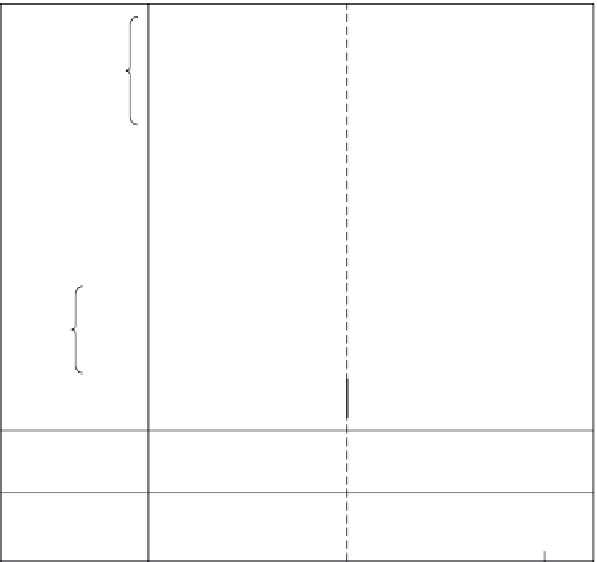Geoscience Reference
In-Depth Information
Radiative
forcing terms
CO
2
Long-lived
greenhouse
gases
N
2
O
Halocarbons
CH
4
Ozone
Stratospheric (0.05)
Tropospheric
Stratospheric
water vapor
Surface albedo
Land use
Black carbon on snow
Direct
e
ect
Cloud
albedo
e
ect
Linear contrails
Total
aerosol
(0.01)
Solar irradiance
Total net
human activities
-2
-1
0
1
2
Radiative forcing (W/m
2
)
Figure 10.6. Summary of the principal components of the radiative forcing
of climate change. Values represent the forcings in 2005 relative to the start
of the industrial era (about 1750). From Climate Change 2007: The Physical
Science Basis. Contribution of Working Group I to the Fourth Assessment
Report of the Intergovernmental Panel on Climate Change (IPCC).
note the very large error bars in
Figure 10.6
and recall that aerosol effects are
regional. Despite the cooling effects of aerosols, in 2005 the net radiative forc-
ing due to human activity was estimated to be 1.6 W/m
2
.
10.3 EXERCISES
10.1. The increase in the longwave direct radiative forcing associated with an
increase in atmospheric CO
2
, ∆
F
(CO
2
), is proportional to the natural log
of the CO
2
concentration according to the formula
∆
F
(CO
2
)
A
ln(
C
/
C
0
),
where
A
6.3 W/m
2
,
C
0
is the initial CO
2
concentration, and
C
is the final
CO
2
concentration.
(a) Calculate the change in the direct radiative forcing, ∆
F
(CO
2
), associated
with CO
2
increases between 1800 and 2010.










